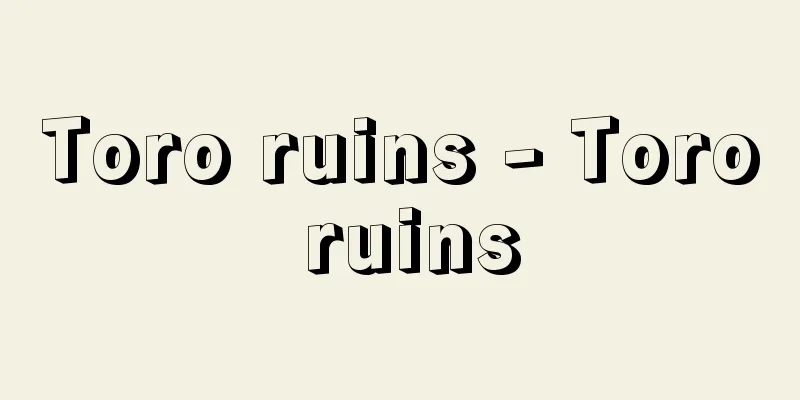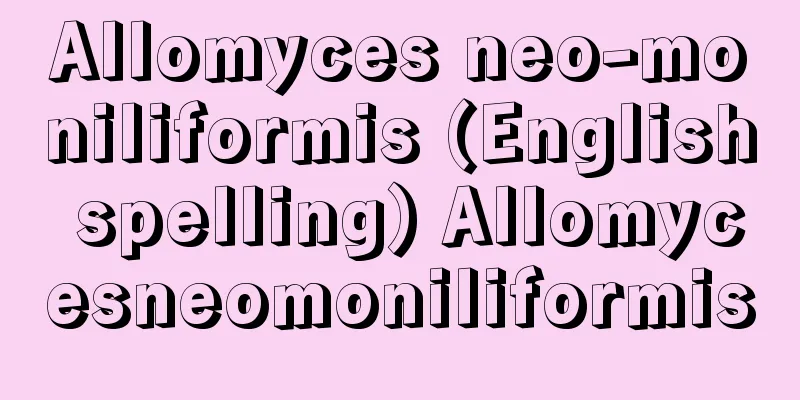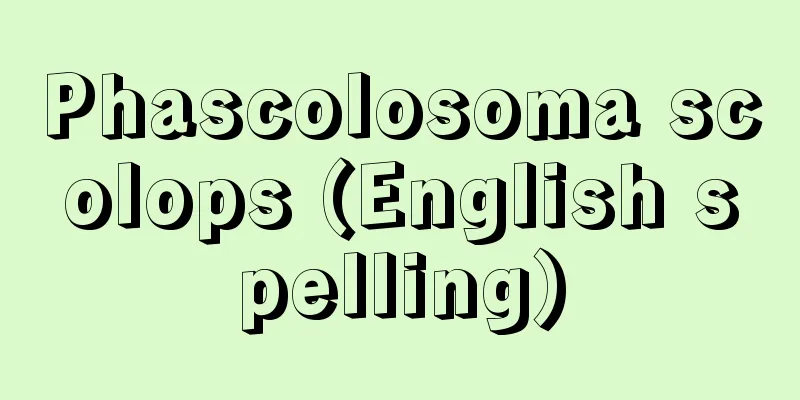Toro ruins - Toro ruins

|
The site of an agricultural village from the late Yayoi period, located in Toro 5-chome, Suruga Ward, Shizuoka City. It was discovered by chance in 1943 (Showa 18) during construction of a munitions factory, and excavations were carried out in the same year, and again from 1947 to 1950 and in 1965. The ruins consist of the site of a settlement built on a natural levee in the alluvial land, the site of rice paddies making use of the slight elevation of the low-lying marshland behind it, and the site of forest. The dwellings were located on flat land, and 12 dwellings were excavated in their entirety. They were oval in plan, surrounded by a bank with clapboard retaining walls. There were two four-pillar storehouses among the group of dwelling sites. Based on the remaining wood and bronze bell paintings, the structure is believed to have been a gabled house with a raised floor, equipped with a ladder and a rat guard made from a single piece of wood. The site of the rice paddy is located in a low-lying marshland bordering the southeast of the settlement, and spreads over an area of over 75,000 square meters. The area was divided by banks made of wooden stakes and sheet piles, and a waterway with a dam ran north to south. Many valuable artefacts have been excavated from the site, providing a glimpse into the daily lives of the people of Toro, including hunting and fishing equipment such as dugout bows and fishhooks made from antlers; agricultural tools such as wooden swords, hoes, spades, rice field clogs, stone knives, two-handed buckets, dugout canoes, mortars, pestles and mashers; building materials, looms, five-stringed harps, pottery, and ornaments such as copper ring- and bracelet-shaped products. The Toro ruins are of great academic significance, as an unprecedented large-scale, systematic survey was carried out in Japan immediately after the war, and this led to the establishment of the Japanese Archaeological Association, an organization of archaeologists. Along with the Karako ruins in Nara Prefecture and the Yoshinogari ruins in Saga Prefecture, it is one of the most important ruins in elucidating the agricultural styles of the eastern provinces during the Yayoi period. It was designated a Special Historic Site in 1953. The Toro Municipal Museum opened in 1972, and there is also a restored residence and storehouse. [Hatsue Otsuka] "Toro" edited by the Japanese Archaeological Association (1954, Mainichi Shimbun)" ▽ "Toro Ruins and the Yayoi Culture" edited by Hatsushige Otsuka and Koichi Mori (1985, Shogakukan) [References] | | | |Source: Shogakukan Encyclopedia Nipponica About Encyclopedia Nipponica Information | Legend |
|
静岡市駿河(するが)区登呂5丁目にある弥生(やよい)時代後期の農業村落址(し)。1943年(昭和18)軍需工場建設工事の際に偶然発見され、同年および1947~1950年と1965年に発掘調査が行われた。遺跡は、沖積地の自然堤防上に立地する集落址と、後背低湿地の微高地を利用した水田址、さらに森林址とから成り立っていた。住居址は平地住居で、12軒が完全な形で発掘された。平面形態は小判形を呈し、周囲に羽目(はめ)板で土留めをした土手を巡らしていた。倉庫は住居址群のなかに4本柱のもの2棟が存在した。その形態は、残存していた木材や銅鐸(どうたく)絵画などから、高床(たかゆか)式の切妻(きりづま)造りと推定され、一木造りの梯子(はしご)や鼠返(ねずみがえ)しなどが備え付けられていた。水田址は集落の南東に接する低湿地に存在し、7万5000余平方メートルにわたって広がっていた。木杭、矢板などを並べてつくった畔(あぜ)により区画され、堰(せき)を設けた水路が南北に走っていた。遺跡からは、丸木弓(まるきゆみ)、鹿角(ろっかく)製釣針(つりばり)などの狩猟・漁労具をはじめ、木製の剣・鍬(くわ)・鋤(すき)・田下駄(たげた)、石包丁、双手槽(もろたぶね)、丸木舟、臼(うす)、竪杵(たてぎね)、砧(きぬた)などの農具、建築用材、織機、五弦琴、土器、指輪形・腕輪形銅製品などの装飾品など、登呂の人々の日常生活をかいまみるような貴重な遺物が多数出土した。 登呂遺跡は、敗戦直後の日本では異例の大規模かつ組織的な調査がなされ、これを契機として考古学者の組織である日本考古学協会が設立されるなど、学史的意義が大きい。弥生時代の東国の農耕形態を解明するうえで、奈良県唐古(からこ)遺跡、佐賀県吉野ヶ里(よしのがり)遺跡とともにもっとも重要な遺跡である。1953年特別史跡に指定された。1972年市立登呂博物館が開館、復原住居・倉庫もある。 [大塚初重] 『日本考古学協会編『登呂』(1954・毎日新聞社)』▽『大塚初重・森浩一編『登呂遺跡と弥生文化』(1985・小学館)』 [参照項目] | | | |出典 小学館 日本大百科全書(ニッポニカ)日本大百科全書(ニッポニカ)について 情報 | 凡例 |
<<: Droysen - Johann Gustav Droysen
>>: Ephemeris belli Troiani (The Trojan War)
Recommend
Essex (Kingdom) - Essex
...the Anglo-Saxons who came to England and settl...
Haplotaxis gastrochaetus
… [Minoru Imajima]. … *Some of the terminology th...
Röhm, Ernst Julius
Born: November 28, 1887 in Munich Died July 1, 193...
Ejection seat
A device for safely escaping from an aircraft, gen...
foliage plant
…These plants will likely be treated as indoor or...
Reading - Yomi
Reading one character or sentence. How to read. re...
Sagifue - Sagifue (English spelling) snipe fish
A marine fish belonging to the order Sticklebacks...
Karunkuru - Karunkuru
…The berries are spherical and contain numerous s...
Old - Deaf
[1] 〘 noun 〙① To grow old. Also, that person. An o...
Ergonomics - Human factors (English)
What is Ergonomics? Different researchers define ...
Special purpose tax/ordinary tax - mokutekizei futsuzei
Tax revenues are used for the provision of various...
Storm - Theodor Storm
German novelist and lyric poet. Born on September...
Celsius degree - Serushiusudo (English spelling) degree Celsius
A temperature scale with 100 degrees as the boili...
Laughter - Warai (English spelling)
Generally, it is a pleasant emotional response ac...
Rotary kiln - Rotary kiln (English spelling)
A general term for rotary kilns, which are genera...









